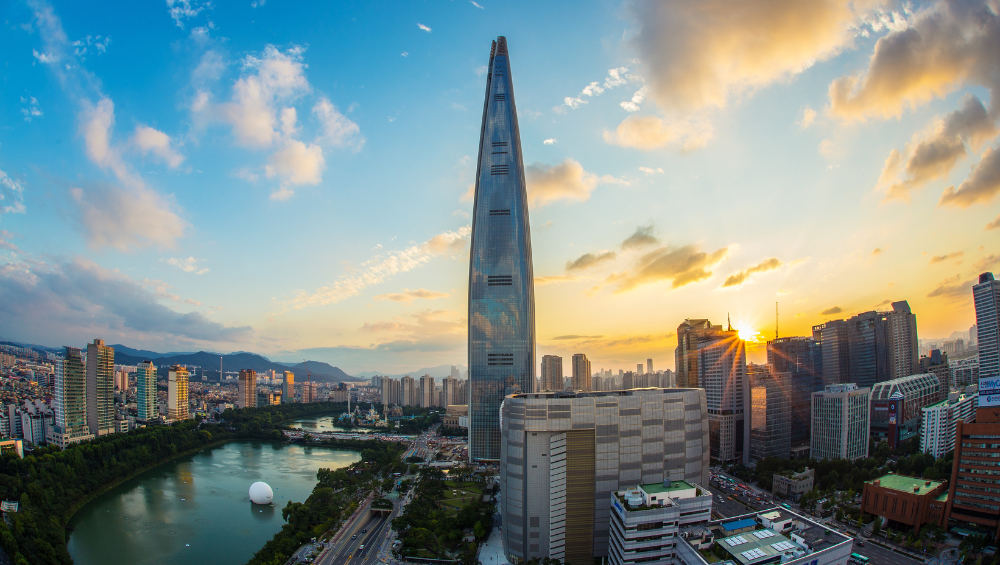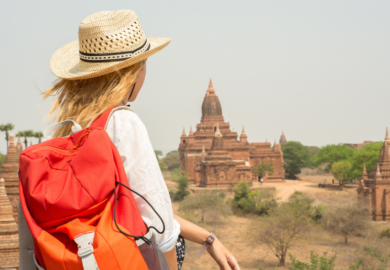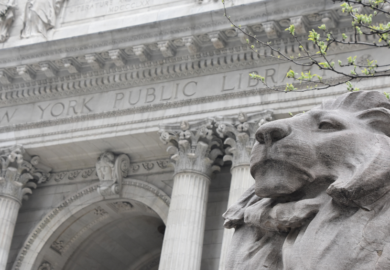Table of Contents
In a world where travel often feels formulaic, driven by top-10 lists and must-visit monuments, there lies an authentic adventure waiting for those who wish to discover a city’s true essence. Seoul, the vibrant heartbeat of South Korea, is a kaleidoscope of ancient traditions and cutting-edge modernism, offering so much more than the well-trodden paths would have you believe.
8 Top Attractions in Seoul South Korea
Seoul, South Korea’s sprawling capital, is a city where history and the future coexist in a fascinating dance. Its streets blend centuries-old palaces, serene gardens, and towering skyscrapers. To truly appreciate Seoul’s diverse attractions, one must venture beyond the ordinary, exploring places that embody the city’s spirit. Below is a curated list of top attractions that offer a glimpse into Seoul’s past and dynamic present.
- Gyeongbokgung Palace – This majestic palace was the main royal residence of the Joseon dynasty. With its intricate architecture and the changing of the guard ceremony, Gyeongbokgung Palace offers a captivating insight into Korea’s history.
- Bukchon Hanok Village – Nestled between Gyeongbokgung and Changdeokgung Palaces, this traditional village boasts well-preserved hanok (traditional Korean houses). It’s a serene spot to experience the lifestyle of old Seoul.
- Changdeokgung Palace and Huwon – Recognized as a UNESCO World Heritage site, Changdeokgung is renowned for its beautiful garden, Huwon, which features a harmonious layout that has been influenced by Korean and Chinese gardening traditions.
- Insadong – Insadong is a vibrant neighborhood known for its traditional tea houses, galleries, and shops selling antiques and crafts. It’s the perfect place to find a unique souvenir or experience traditional Korean culture.
- N Seoul Tower – Situated on Namsan Mountain, the N Seoul Tower offers panoramic city views. It’s a popular spot for locals and tourists alike, especially at night when the tower is illuminated.
- Myeongdong – One of Seoul’s main shopping districts, Myeongdong, is alive with streets lined with shops, boutiques, and street food vendors. It’s an ideal destination for fashion enthusiasts and foodies.
- Hongdae – Known for its youthful ambiance and indie music scene, Hongdae is a lively area filled with cafes, bars, shops, and street performances. It’s the heart of Seoul’s contemporary youth culture.
- DMZ (Demilitarized Zone) – While technically not in Seoul, a visit to the DMZ offers a rare glimpse into the divide between North and South Korea. It’s a poignant reminder of the country’s post-war history and current tensions.
Each attraction embodies a different aspect of Seoul’s identity, from its historical depths to its modern heights. Embarking on this itinerary will provide a comprehensive and authentic experience of Seoul’s rich cultural tapestry.
Seoul South Korea 7-Day Itinerary
If you’re the kind of traveler who seeks out the hidden heart of a destination, our curated 7-day itinerary for Seoul promises an unforgettable immersion into local life. From savoring the secrets of traditional hanok homes to bustling through markets and cafes loved by locals, this guide invites you to peel back the layers and truly connect with this dynamic city.
Day 1: Seoul Neighborhoods
Begin your Seoul adventure by exploring the tapestry of its local neighborhoods, each with its unique character and charm. This day is dedicated to immersing yourself in areas less traveled by tourists, where the rhythms of daily life offer a more nuanced understanding of the city. From wandering through residential streets to discovering local eateries and markets, you’ll experience the authentic pulse of Seoul.
This exploration brings you closer to understanding the city’s cultural and social dynamics and allows for unexpected encounters and discoveries that are often the highlight of genuine travel experiences.
- Morning in Insadong: Kick off your day with a heartwarming Cup of Joe at a traditional Korean cafe. Soak in the cozy ambiance and marvel at Hanji craftwork and local art in surrounding galleries.
- Bukchon Hanok Village: Step back in time among the well-preserved hanok houses of this historical village. Learn about the area’s rich history through informative signboards and enjoy a truly local lunch at a spot where the menu sings in Korean only.
- Afternoon in Ikseon-dong: Experience the blend of ancient and modern in Ikseon-dong. Rent a Hanbok, savor a generations-old bingsu recipe, and explore shops offering traditional teas and modern crafts.
- Evening in Hongdae: As night falls, immerse yourself in the vibrant arts scene of Hongdae. Enjoy live music, dynamic performances, and diverse culinary delights in this hub for the youthful and spirited.
Day 2: Seoul Immersion
The second day of our Seoul itinerary is dedicated to a deep cultural immersion, offering a firsthand experience of the rich traditions and artistic heritage that make this city uniquely captivating. We’ll venture into spaces where Seoul’s historical narratives and contemporary artistic expressions coalesce, enabling travelers to see and engage with the city’s cultural fabric.
From museums that chronicle Korea’s past to artistic venues that showcase the country’s creative future, today’s activities promise an enriching exploration of Seoul’s cultural panorama.
- Korean Cooking Class in Seoul—Begin your journey with a cooking class in Seoul, where you’ll learn to make kimchi and uncover the secrets behind the delicious bibimbap, two staples of Korean cuisine.
- Visit a Jjimjilbang – Experience a traditional Korean bathhouse after lunch. It’s not just about cleansing; it’s a cultural experience of relaxation, rejuvenation, and community all in one.
- Stroll Along the Han River – End your day with a serene walk along the Han River. It’s the perfect spot for quiet reflection or people-watching, embodying the local way to unwind and embrace daily life in Korea.
Day 3: Art & Creativity in Seoul
Seoul’s artistic heartbeat thrives within its galleries, street art, and the creative souls of its residents. Day 3 of our itinerary is dedicated to exploring the city’s vibrant art scene and unleashing your creativity. From contemporary art museums that showcase cutting-edge works to whimsical street art alleys that tell stories of the city’s spirited culture, this day promises a deep dive into the artistic expressions that make Seoul unique.
Engage with local artists, participate in a workshop, or simply admire the beauty around you—today is about celebrating creativity in all its forms.
- Dongdaemun Design Plaza: Dive into Seoul’s modern art scene at this architectural wonder. It’s the go-to place for innovative design and exhibitions featuring local and international artists.
- Dongdaemun Market: Experience the flavor explosion of Seoul’s culinary scene. This market is a paradise for foodies, offering a myriad of gastronomic delights that reflect the city’s vibrant spirit.
- Samcheong-dong Art Galleries: Wander through Seoul’s artistic heart, nestled in the shadow of royal palaces. Each alleyway and gallery in Samcheong-dong teems with creativity and the potential for discoveries.
- Independent Theaters and Live Music Venues: End the day immersed in Seoul’s dynamic performing arts scene. From intimate theater performances to lively music gigs, there’s always something to feed your creative soul.

Day 4: Nature of Seoul
After immersing ourselves in the pulsating heart of Seoul’s local neighborhoods, cultural richness, and artistic vibrancy, Day 4 of our itinerary invites us to enter tranquility and natural beauty. This day is tailored for those who seek to harmonize with nature and indulge in moments of relaxation amidst the bustling city life.
From serene parks to breathtaking mountain views, Day 4 is your opportunity to recharge, reflect, and connect with Seoul’s natural landscapes.
- Day Trip to Nami Island: Immerse yourself in nature’s embrace. Nami Island offers a peaceful retreat from the hustle and bustle, where every season brings its unique beauty.
- Garden of Morning Calm: Experience this botanical wonder, a testament to nature’s ever-changing palette. It’s the perfect spot for those seeking tranquility and a reconnect with nature’s subtle artistry.
- Visit a Local Tea House: Dive into the cultural heritage of Korea with a traditional tea ceremony. This experience blends the old with the new, teaching the art of patience and the elegance of tea preparation.
Day 5: Hidden Gems in Seoul
As we progress into Day 5 of our exploration of Seoul, we turn our attention to uncovering the less frequented but equally enchanting corners of the city. This day is dedicated to the hidden gems that offer a glimpse into the understated charm of Seoul, away from the usual tourist trails. By venturing into these locales, travelers will encounter the authentic heart of the city—the quiet alleyways, the local markets unseen by most, and the tranquil spots that provide a haven from the urban rush.
This is an invitation to experience Seoul through the lens of its hidden treasures, each with its own story and distinctive allure.
- Discover Mangwon-dong and Seongsu-dong: Venture into these local neighborhoods for a treasure trove of hidden cafes, indie markets, and an authentically unscripted vibe. They are perfect for those looking to experience the city’s more understated charms.
- Seodaemun Prison History Hall Visit: This visit is more than just an educational trip. It confronts you with the stark realities of Seoul’s past and offers a deep insight into the city’s history and the indomitable spirit of its people.
- Sunset at Namsan Mountain: Climb Namsan Mountain at dusk to witness a breathtaking sunset and enjoy panoramic views of Seoul as it transitions from day to night. It is ideal for romantics and photography enthusiasts alike.
Day 6: Day Trip to Suwon
Day 6 takes us on an exciting day trip outside the bustling streets of Seoul to the historic city of Suwon. This excursion promises a blend of cultural heritage, architectural marvels, and a glimpse into Korea’s strategic military history. Suwon is renowned for its well-preserved Hwaseong Fortress, a UNESCO World Heritage Site that encircles the city’s heart, offering visitors an immersive experience into the late 18th-century Joseon dynasty defenses.
Alongside historical exploration, Suwon presents a vibrant culinary scene and lively markets that reflect its status as a city where tradition and modernity converge seamlessly. This day is an excellent opportunity for those looking to explore Korea’s rich history and cultural dynamics beyond the capital.
- Hwaseong Fortress: The Crown Jewel of Suwon: Discover the UNESCO World Heritage site that is a testament to the Joseon Dynasty’s rich history. With its majestic structures and historical significance, the Hwaseong Fortress offers a glimpse into the past, making it a must-visit for any cultural enthusiast.
- Korean Folk Village: A Journey Through Time: Step into the Korean Folk Village for an immersive experience that showcases the customs and craftsmanship of Korea’s rich heritage. This interactive museum allows visitors to see and experience Korea’s traditions, making history come alive in the most engaging way.
Day 7: Seoul Reflection
On the final day of our week-long exploration of Seoul and its surroundings, Day 7 is dedicated to leisure and reflection. It’s a day intentionally left open for you to revisit any spots that capture your heart, indulge in last-minute shopping, or simply relax and take in the city at your own pace. This day offers a moment to pause and reflect on the experiences gathered, the sights seen, and the memories made.
Whether you choose to spend it wandering through bustling streets, enjoying a leisurely meal, or sitting quietly in one of Seoul’s many parks, today is about savoring the final moments of your stay in this dynamic city.
- Morning Shopping Spree in Itaewon: Start your day with a leisurely walk through Itaewon’s lively streets. Shop for unique finds and enjoy the international cuisine that makes this expat area so beloved.
- Farewell Brunch: Choose a trendy restaurant in the district for a farewell brunch. It’s a perfect time to reminisce about your week’s adventures and marvel at how the time has flown.
- Afternoon at the National Museum of Korea: Dedicate your afternoon to exploring the National Museum of Korea. This visit will deepen your understanding of the nation’s heritage and artistic achievements.
- Evening Culinary Crescendo: Conclude your day under the stars of Seoul with a dinner that celebrates your trip. It’s an opportunity to savor your favorite experiences and toast to the memories you’ve created.

Seoul Tips & Resources
- Explore Traditional and Modern Attractions: Dive into a mix of experiences, from peaceful temple stays to vibrant traditional performances. Don’t forget comfortable walking shoes for your explorations!
- Navigate with Ease: Utilize Seoul’s extensive public transportation for a seamless experience. For more direct routes, affordable taxis are readily available.
- Stay in a Local Guesthouse: Experience Korean hospitality firsthand by staying in a guesthouse. It’s a budget-friendly way to immerse yourself in the community and local lifestyle.
- Speak Like a Local: Learning basic Korean phrases such as “Hello” (안녕하세요 – Annyeonghaseyo) and “Thank you” (감사합니다 – Gamsahamnida) shows respect and connects with locals.
- Attend Local Events and Festivals: Enhance your visit by participating in local happenings. These events offer a unique glimpse into Seoul’s culture, from the Cherry Blossom Festival to traditional dance shows.
Wrapping Seoul South Korea
Seoul is a city of contrasts and complexities, where the ancient harmonizes with the avant-garde, and history dances with progress. By forging your path beyond the tourist traps, you’ve collected experiences and connections that will resonate with the true spirit of the Korean people and their capital city.
Travel is not always about the miles we cover but the moments we capture. This itinerary is just the beginning of your story with Seoul. It’s a canvas for you to paint with your unique strokes, adding layers of flavor and discovery to an adventure that is, and always will be, yours.
FAQs About Seoul South Korea
Is Seoul a safe city for tourists?
Yes, Seoul is considered one of the safest cities for tourists. The crime rate is relatively low, and there are high levels of safety in public transportation and streets, even at night. However, like in any major city, it’s always wise to stay aware of your surroundings and take standard safety precautions.
What is the best time of year to visit Seoul?
The best times to visit Seoul are during the spring (March to May) and fall (September to November). During these seasons, the weather is mild, and the city is adorned with either vibrant cherry blossoms or the rich hues of autumn leaves, providing a stunning backdrop for your visit.
Can I get by in Seoul with English only?
While the official language is Korean, many people in Seoul speak English, especially in tourist areas, major hotels, and public transport systems. English signage is also widespread. However, learning a few basic Korean phrases can enhance your experience and is appreciated by locals.
What are the must-try foods in Seoul?
Seoul offers a diverse culinary scene that ranges from traditional Korean dishes to international cuisine. Must-try foods include Kimchi (fermented vegetables), Bulgogi (marinated beef barbecue), Bibimbap (mixed rice with meat and assorted vegetables), and street food delights such as Tteokbokki (spicy rice cakes) and Hotteok (sweet pancakes).
What is the public transportation system like in Seoul?
Seoul boasts an extensive and efficient public transportation system that includes buses, subways, and taxis. The subway is the most convenient way to get around, with extensive networks that are timely, clean, and easy to use. Stations and trains offer English signs and announcements. T-money cards, which can be easily recharged, are used to pay for most transportation fares and even in convenience stores.



